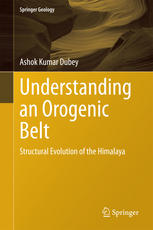

Most ebook files are in PDF format, so you can easily read them using various software such as Foxit Reader or directly on the Google Chrome browser.
Some ebook files are released by publishers in other formats such as .awz, .mobi, .epub, .fb2, etc. You may need to install specific software to read these formats on mobile/PC, such as Calibre.
Please read the tutorial at this link: https://ebookbell.com/faq
We offer FREE conversion to the popular formats you request; however, this may take some time. Therefore, right after payment, please email us, and we will try to provide the service as quickly as possible.
For some exceptional file formats or broken links (if any), please refrain from opening any disputes. Instead, email us first, and we will try to assist within a maximum of 6 hours.
EbookBell Team

0.0
0 reviewsThe book provides a model for the structural evolution of the Himalaya with relevant background information making it easily accessible to earth scientists specializing in other areas. The book is divided into two parts: The first part describes the basic principles of structural geology that are required to understand the evolutionary model described in the second part.
The book incorporates some of the commonly ignored structural features, such as Pre-Himalayan rift tectonics, reactivation of faults, simultaneous development of folds and thrust faults, superposed folds, strike-slip faults developed during early and superposed deformation, problems with GPS data, erratic crustal shortening obtained by restoration of deformed sections, etc. The proposed model is essentially based on inversion tectonics and provides answers to some previously unresolved questions. It describes in detail the structure of the Himalaya as a primary arc, with supporting evidence from model deformation under controlled boundary conditions and anisotropy of magnetic susceptibility studies.